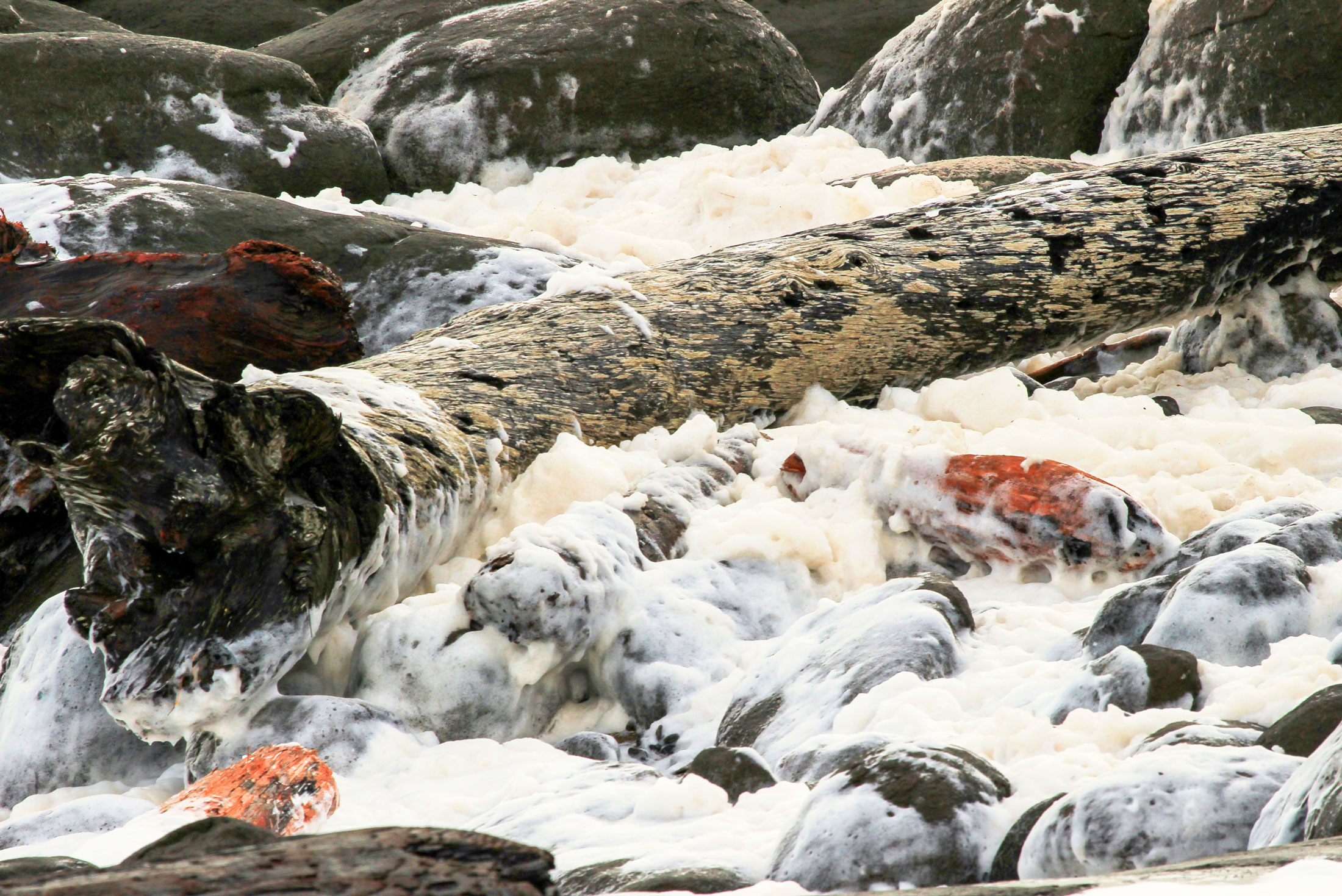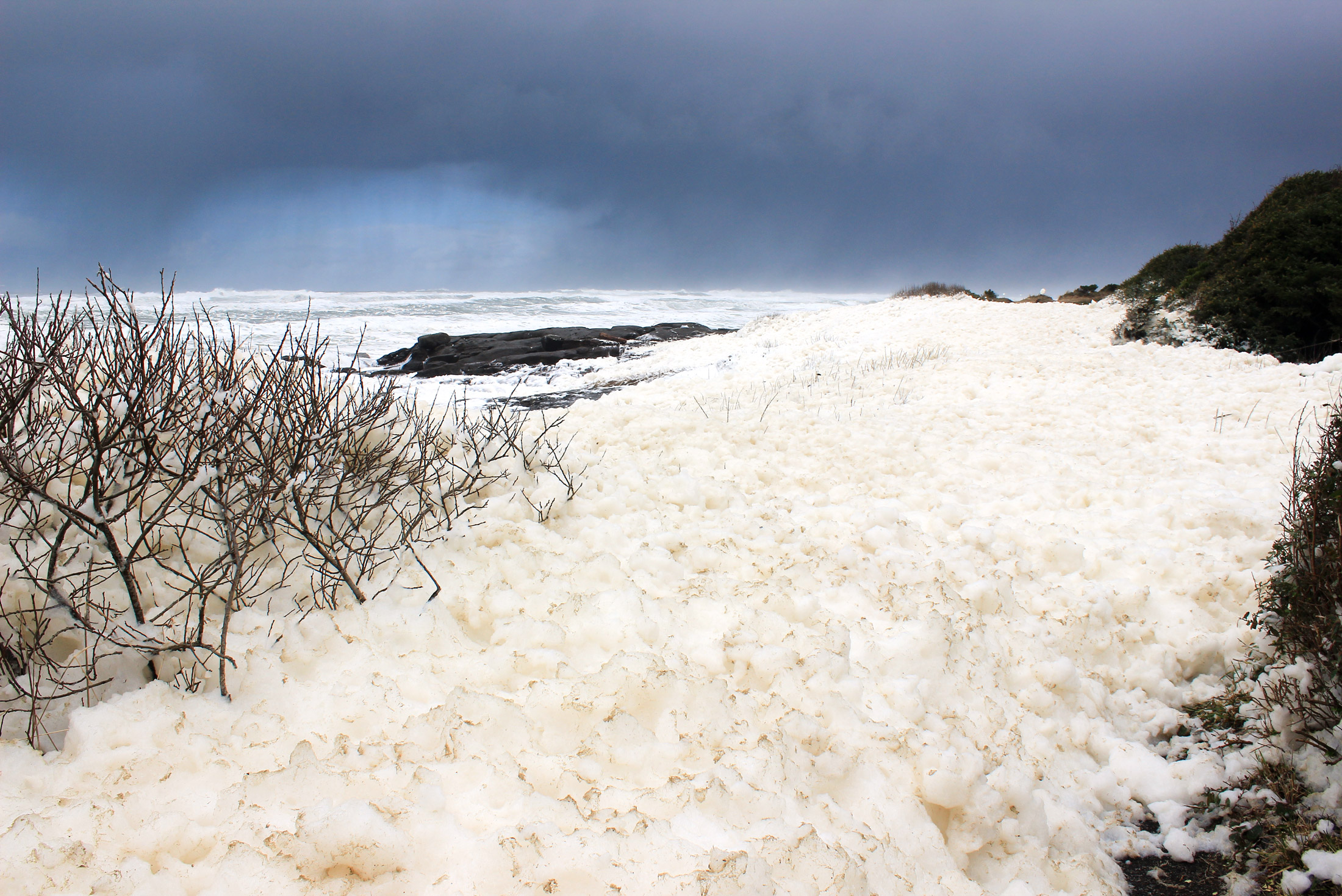
Sea Foam on the Oregon Coast
Walking along the beach at the Oregon Coast, you can’t miss noticing sea foam. Hugging the shoreline, this spume comes in with the waves and settles on the sand in drifts and clumps that can look as scummy as dirty dishwater suds or as white as fresh snow.
Sea foam may look like pollution – especially when it’s brown and sludgy – but it’s actually a natural part of the ocean environment, according to the National Oceanic and Atmospheric Administration (NOAA). Sea foam is created when the wind and the waves churn up organic matter offshore. This organic matter is usually the skeletons of dead phytoplankton or large blooms of algae decay. Phytoplankton are those tiny creatures – we can’t see them with the naked eye – that feed whales and other sea life. When phytoplankton die off, their skeletons stick together and form a layer that traps air in the ocean water. Bubbles and foam result.
Some years or seasons there is a lot of sea foam along Oregon’s coastal beaches. These foam events show how the ocean is in constant flux, between the creatures living within it and the environmental factors shaping it. During stormy weather – an Oregon Coast specialty – wind action across the ocean really stirs up sea foam, driving it ashore. On calm days, less of it appears.
Visitors staying at The Fireside Motel don’t need to go far to find sea foam. It can wash ashore year-round and may be visible along the shoreline at Tillicum Beach, at Yachats State Recreation Area, or any other sandy coastal stretch farther north or south.
Another great spot to see frothy sea foam in action is at Devils Churn, part of the Cape Perpetua Scenic Area, just a few miles south of The Fireside Motel. From the overlook, visitors can watch waves crash into a deep basalt rock chasm. On stormy days especially, sea foam sprays into the air like wind-driven snow. Stand well back and enjoy the stunning scenery.
For more of a bird’s-eye view, drive to the Cape Perpetua Scenic Overlook and scan miles of coastline to appreciate the magnitude of sea foam washing ashore.
In general, sea foam is not harmful to humans, but the decay of large algal blooms near shores could have impacts on human health, the NOAA says. Surfers or anyone else wading into the ocean should check local water conditions and follow advice posted by the state or the local environmental health department, advises the Centers for Disease Control and Prevention.
To learn more about sea foam and the ocean environment, plan a trip to the Hatfield Marine Science Center or to the Newport Aquarium, both north of Yachats.
Or, just go for a walk along the 804 Trail, right outside The Fireside Motel. Sea foam may be just one of the many wonderful sights you’ll see.

OCEAN & BEACHES
